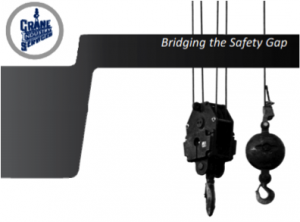Bridging EHS Management Gap
May. 13, 2015 —Speaking at the 2015 Indiana Safety and Health Conference in March, Debbie Dickinson, CEO and Director of Development for Crane Industry Services, engaged health and safety professionals from a wide variety of industries about the important role they play.
More than 70 people attended the session and participated in an activity to demonstrate how distractions detract from the core message of a tool box or pre-shift safety talk.
Teams were tasked with giving basic directions for the best way to teach a simple and familiar task. During the leader’s presentation to a small group, individuals outside the group intentionally became distractions. One person walked by talking loudly; another almost walked into a group, head down, looking at a phone. As a half dozen different distractors circled the room, each group noticed two or more of the distractions. When polled after the presentation, the workers receiving the direction usually could only recall one of the points made by the leader.

The purpose of the exercise: Convey that providing safety information does not mean that it has been fully received and understood.
EHS professionals face many hurdles, but from a management perspective, they are often caught in the middle between leadership and the rest of the company. To effectively deliver important information from the executive to the frontline and vice versa, EHS managers must first identify which departments in their organization have clear roles in safety management. It’s also essential to understand the financial priority the organization places on safety.
Safety: Core Value or Priority? Most companies state that safety is a core value. The difference between a core value and a priority is that priorities change while core values do not. Some companies will reference safety as a core value, but its actions reveal safety is in fact a priority—sometimes a very high priority, but not a core value. If the importance of safety moves up and down on a company’s list of necessary protocols, depending on budget, deadlines, or who is asking questions or giving directions, then safety may be a priority not a core value.
When safety is a core value, then day-to-day decisions in every department—from Human Resources to Purchasing to Production to Marketing—are made based on their impact on safety.
A litmus test for safety as a core value
- Does production set realistic timelines to complete work safely?
- Do bids provide for a Plan B when the timeline is impacted by things like weather, work order changes, equipment downtime, or worker shortages, etc?
- Are investments in training viewed in terms of return on safety rather than as a cost?
- Are the links between higher productivity and safety clear and documented?
- Does the company reward safe behavior in the same way it rewards productivity?
Crane Industry Services LLC, based in the Atlanta, Ga. area, was established in 2008 to provide training, certification, equipment inspections, expert witness services and consulting to the lifting industry. Crane Industry Services is centered on safety and known for creating innovative and affordable solutions for the crane and rigging industry. www.craneindustryservices.com

